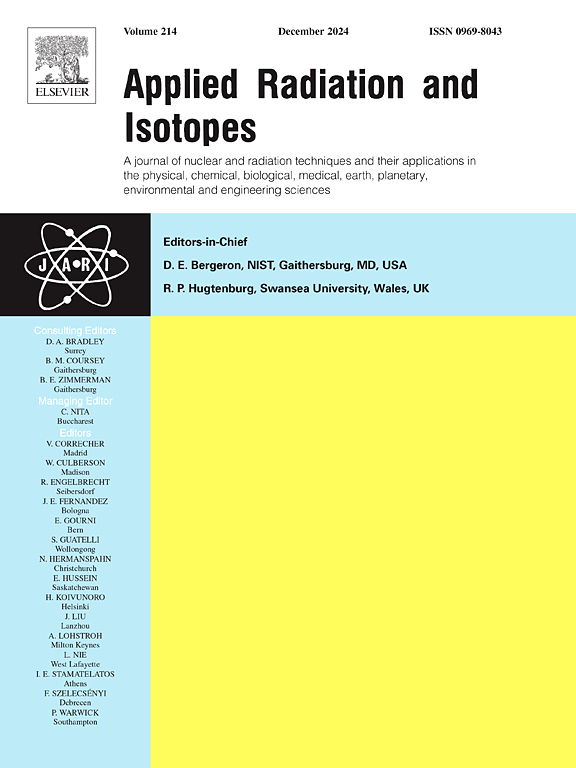Production, radiochemical separation and electrochemical concentration of No-carrier-added 52Mn: An emerging PET radiometal
IF 1.6
3区 工程技术
Q3 CHEMISTRY, INORGANIC & NUCLEAR
引用次数: 0
Abstract
Recently, there has been significant interest in 52Mn (T½ = 5.6 d) as a relatively long lived radiometal for PET imaging of cancer. In this study, we have produced 52Mn from natural Cr metallic powder target via 52Cr (p, n) 52Mn reaction in a particle accelerator. An efficient radiochemical separation method based on selective precipitation of Cr as Cr(OH)3 followed by electrochemical purification and concentration of 52Mn was developed for isolation of no-carrier-added (nca) 52Mn from the irradiated target. The overall radiochemical separation yield of the process was >75 %. After separation, 52Mn was obtained with >99.5 % radionuclidic purity and >97 % radiochemical purity. The apparent molar activity of 52Mn was determined to be 2.2 ± 0.1 MBq/nmol and it was found suitable for preparation of radiopharmaceuticals. As a proof of concept, [52Mn]Mn-DOTA-E[c(RGDfK)]2 was prepared with 98.8 ± 0.4 % radiolabeling yield and the radiochemical stability of the formulation was maintained over a period of 7 days under physiological conditions. Overall, this strategy is viable for obtaining nca 52Mn in a suitable form for radiopharmaceutical preparation and would potentially increase the availability of this radiometal for clinical PET imaging in foreseeable future.

求助全文
约1分钟内获得全文
求助全文
来源期刊

Applied Radiation and Isotopes
工程技术-核科学技术
CiteScore
3.00
自引率
12.50%
发文量
406
审稿时长
13.5 months
期刊介绍:
Applied Radiation and Isotopes provides a high quality medium for the publication of substantial, original and scientific and technological papers on the development and peaceful application of nuclear, radiation and radionuclide techniques in chemistry, physics, biochemistry, biology, medicine, security, engineering and in the earth, planetary and environmental sciences, all including dosimetry. Nuclear techniques are defined in the broadest sense and both experimental and theoretical papers are welcome. They include the development and use of α- and β-particles, X-rays and γ-rays, neutrons and other nuclear particles and radiations from all sources, including radionuclides, synchrotron sources, cyclotrons and reactors and from the natural environment.
The journal aims to publish papers with significance to an international audience, containing substantial novelty and scientific impact. The Editors reserve the rights to reject, with or without external review, papers that do not meet these criteria.
Papers dealing with radiation processing, i.e., where radiation is used to bring about a biological, chemical or physical change in a material, should be directed to our sister journal Radiation Physics and Chemistry.
 求助内容:
求助内容: 应助结果提醒方式:
应助结果提醒方式:


